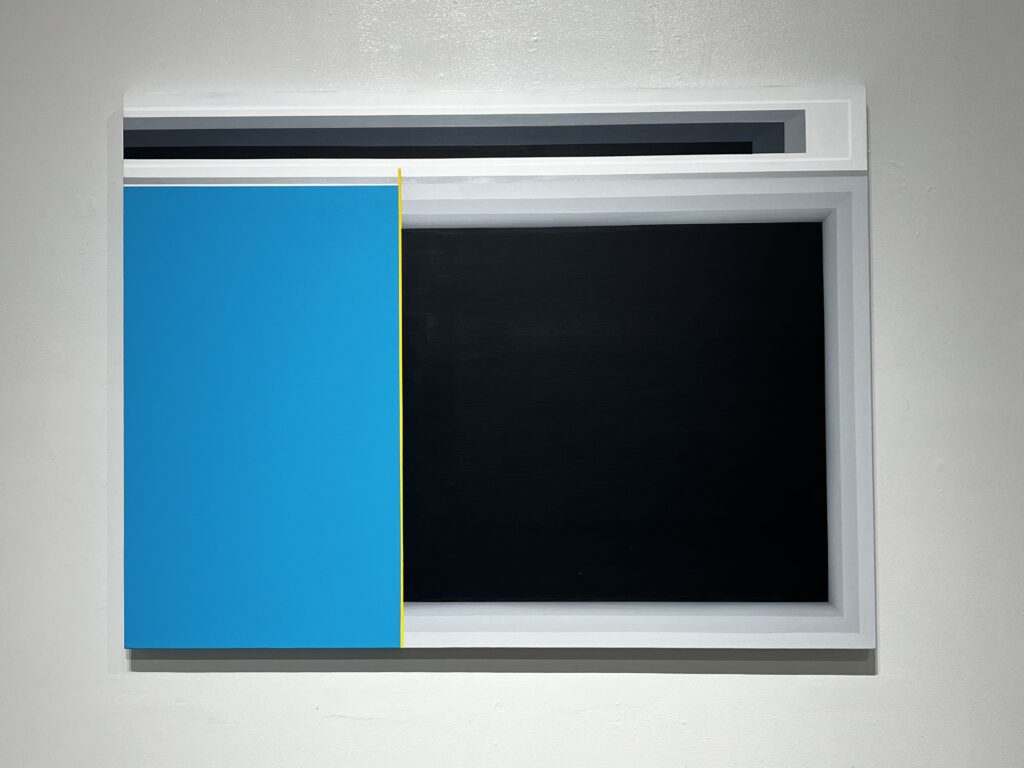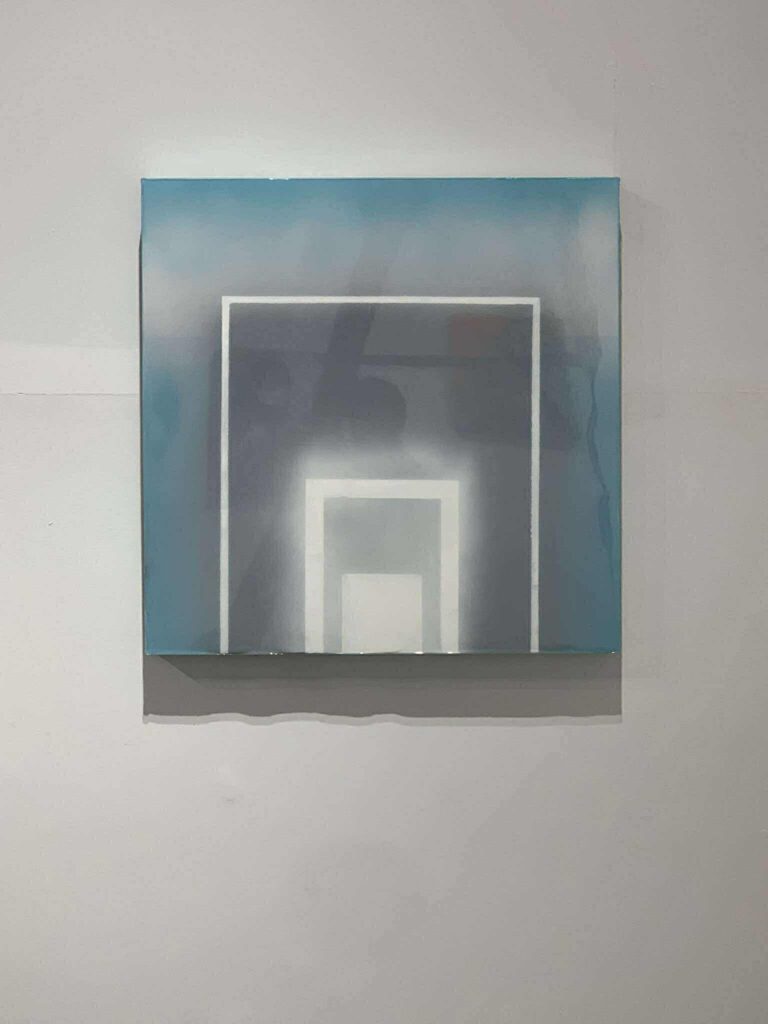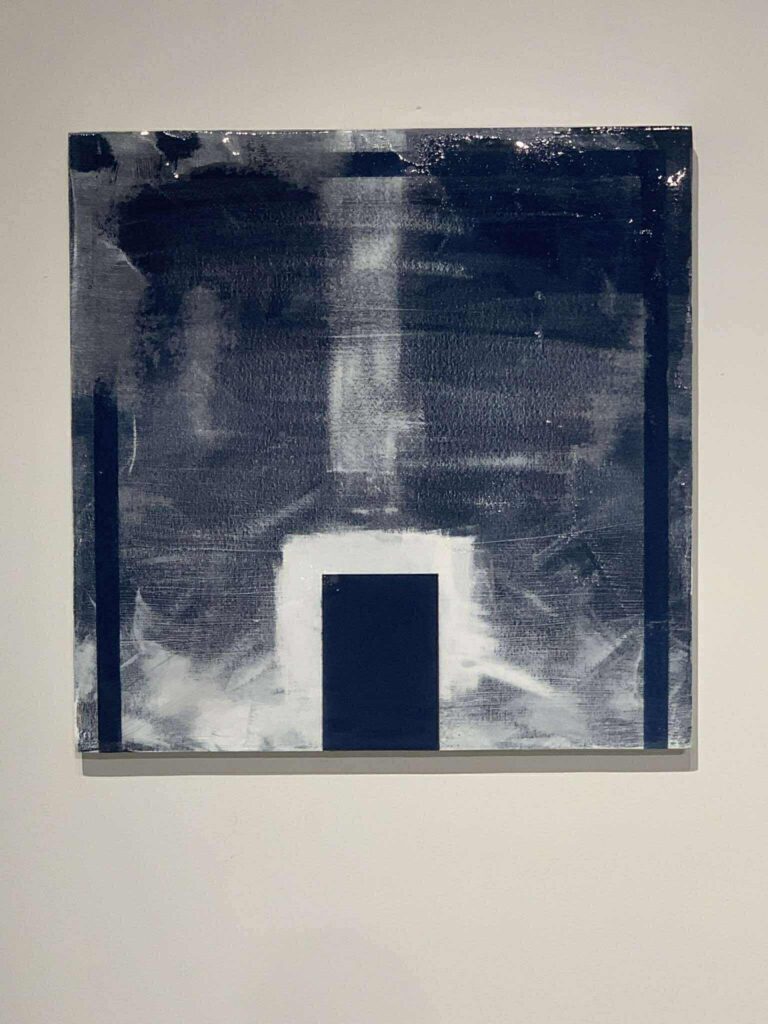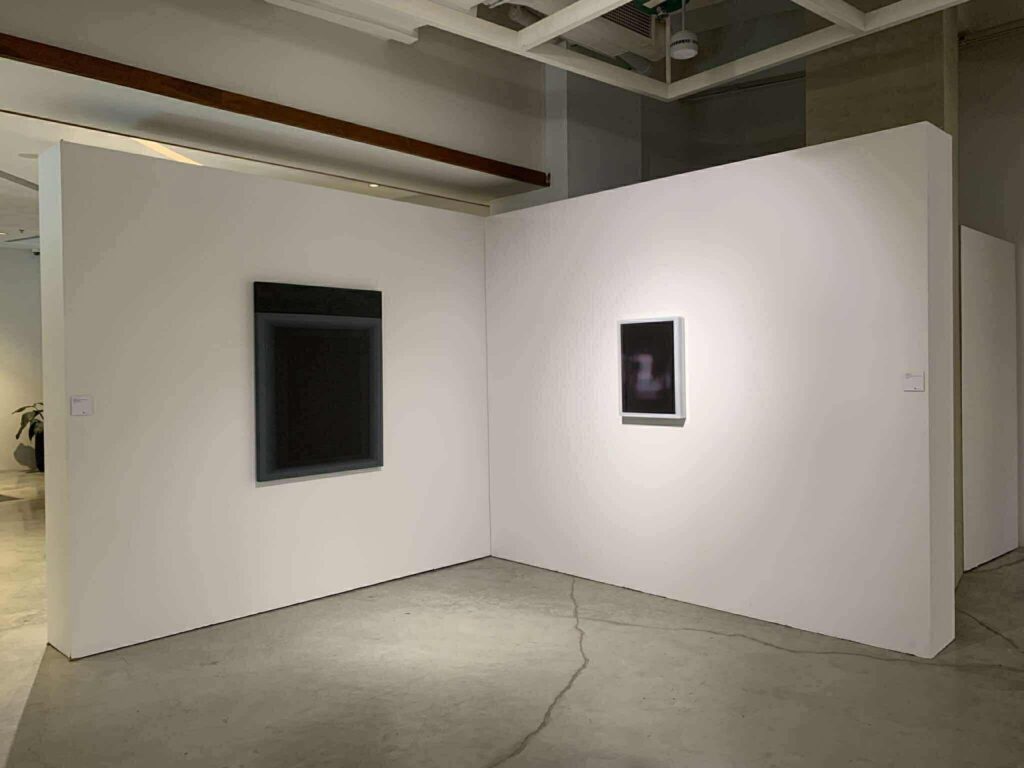In an artistic occasion where instead of the celebrated figures of humanity and its concomitant attributes (the bursting life, visual colors and stories), the square, or to be precise, the convex quadrilateral, seizes the day, takes center stage, and quietly secures from the viewer an emotional association with aesthetic wholeness, or oftentimes, an indifferent gaze that strongly identifies on the ignorant premise that the square is a soulless display of artistic lines, colors and shapes.
A few or so gallery goers, museum visitors, “art enthusiasts,” even artists themselves, at least here in the country, or in this city, perhaps by way of in the dark familiarity, or the country’s performative class connect to figurative representations, would generally relegate the square to a liminal recognition, either through an anemic acknowledgment or a blatant thrashing of the square as simply fatuous.
However, this square, as many a people deem minimalist, an impassive slab of stone instead of a throbbing cut of meat, in the context of abstract expressionist painting, has more to offer than it appears: Robert Ryman’s viscous brushstrokes to study the nature of the paint as a material and the evolving process of its application, Agnes Martin’s mystically meditative grid works vis-à-vis her diagnosed paranoid schizophrenia, Mark Rothko’s emotive color field paintings and his ensuing life’s end.

Despite its occasional dismissal and its limited popularity, abstract expressionist painting, of the color field movement, focusing on the convex quadrilateral, persevered and influenced many a Filipino, who lived through the figurative dominance, while incorporating varied and interesting artistic facets in the austere style of minimalism. From this perspective, this city welcomed and exhibited, via Iloilo Museum of Contemporary Arts (ILOMOCA), works of three Filipino abstract expressionist painters.
Ricky Francisco’s paintings in polyester resin exude an oneiric sheen of an ingress to an alternate dimension beyond scientific reach. One may attest it spiritual, in a transcendental sense of the word, “windows into heaven,” though Francisco’s painterly medium is very much earthly, industrial in fact, a cost-effective material mostly used in adhesives and glass fiber applications.


Polyester resin and art shared a cohesive history. From the minimalist to installation to conceptual, the material played a significant role in the evolution of artistic practices. Though in Francisco’s paintings, it is not so much a study of material process and application than an empirical postulation of cool warmth and intensity, through his choice of colors, geometric compositions, and both relationship to resin, and an ongoing discourse, in cinematic parlance, on the Tarkovskian meaning of life.
Francisco’s thematic practice concavely mirrors Rhaz Oriente’s technical oeuvre. Francisco is on a metaphysical plane; Oriente, on the one hand, is on a tangible physicality that punctuates the composition of her surreally enigmatic works. Oriente is surely enamored with today’s technology. (Who is not?) As it is evident that we all are. Though in Oriente’s work, this technology is vital in the process and development, in the contemplative pursuit, of her experiential themes. Oriente’s use of UV printing and her composition of it using layered panels in acrylic frame, this technological corporality placed side by side her emphasis on time, its passage, the temporal quality which affects the spatial quality of existence, the changes it manifest, is as crucial and interesting as the relative late-night TV static that comes off as a mesmerizing pale glow, that could make or break the being and non-being of an individual.

Beside Oriente’s work, perpendicularly aligned, is Les Amacio’s lyrically titled black painting. Threateningly large for its size, the foreboding flatness of its color is heightened by a white gradient of quadrilateral frame that eerily seems to serve as a gateway to stygian realities. It stands alone as possibly a discussion about the misanthropic aspects of the world, both a contemplation on the universality of life and death, and humanity’s capacity for love and violence. Though the color black may mean differently, in Amacio’s work it may suggest the diasporic challenges and struggles of Filipinos abroad, as Amacio spent a long time working overseas, he, among many people, experienced the beauty and madness of the world.
Incidentally, all three were, or still are, museum or gallery workers, who, through imperative practice and absolute dedication in their art, managed to be among the primary movers of their generation. Square or not, art, regardless of form, cannot unfairly be boxed up in a blinkered notion of nonsense. Without a doubt, it will survive the times. Like it or not.
Erratum: Earlier version of this article attributed the first artwork to Ricky Francisco. It has been corrected to attribute to Les Amacio.
